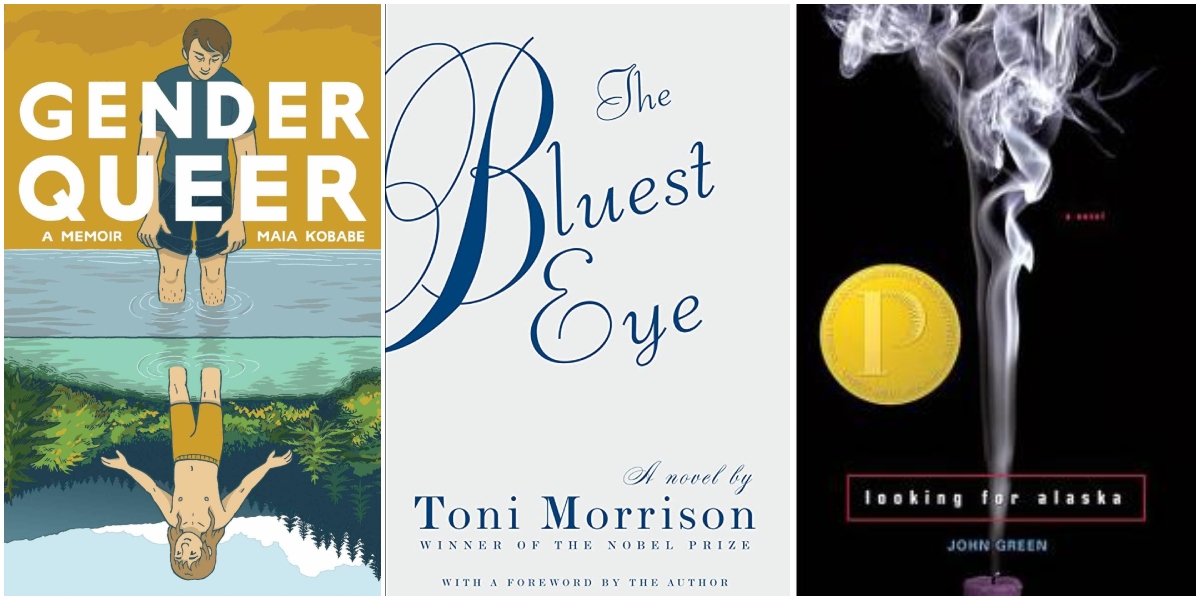The American Library Association (ALA) has released its annual list of the top ten most challenged books in schools and libraries, and each book that made the list in 2022 has something in common.
The list is compiled by the ALA’s Office for Intellectual Freedom (OIF) but only counts challenges to books that were reported to the ALA or received significant press attention. Since challenges to less prominent titles don’t always get media attention, the list is only a small snapshot of the actual number of challenges that took place in 2022 and the kind of books that most often fall victim to censorship.
Lists like these are drawing more attention as the number of banned and challenged books has been rising exponentially. In 2022 alone, the ALA identified 2,671 individual book titles that were targeted for censorship and recorded 1,269 demands to censor library books. These numbers are the highest that the organization has seen since it first began compiling and recording this data 20 years ago. Since 2020, the number of banned individual titles has risen by a staggering 1,100%.
This year, 13 books made the list of the top 10 most challenged books of 2022. This is because several books tied for fifth and 10th place on the list by receiving equal numbers of challenges. The list featured several familiar books, such as Toni Morrison’s The Bluest Eye and Sherman Alexie’s The Absolutely True Diary of a Part-Time Indian, which have both been making the list off and on for the past decade. Just as LGBTQIA+ literature was hard-hit in 2021, so was it this year, with many of the same titles in the category from 2021 making it to the 2022 list. While every book had a myriad of “reasons” for being banned, all the books had one reason in common.
All the top 13 books were banned for “sexually explicit content”
Every single book on the list this year was challenged or banned, at least in part, because they were “claimed to be sexually explicit.” The second most common reason was “LGBTQIA+ content,” while a few titles also had “profanity” or “depictions of sexual abuse” listed as reasons. However, it’s the common theme of “sexually explicit” that really stands out, as it seems to be used as an umbrella term to encompass any content that relates to sex at all. For example, The Perks of Being a Wallflower and The Bluest Eye tackle subjects of sexual abuse, trauma, and repressed memories, while This Book is Gay provides sex education for young readers who identify with the LGBTQ+ community and may struggle to find resources. All three of these books can educate, raise awareness, or help a young reader who may relate to the story. Yet, all of this merit gets washed away when the books are simplified as being just “sexually explicit.”
Lumping together sex education, references to sex, sexual abuse, sexual identity, and everything else related to sex as “sexually explicit” content that should be banned exposes a gross oversimplification that sex = bad. Additionally, a lot of these bans took place in public libraries, not just schools. While one can perhaps argue that most sexual content is too mature for school-aged children, it’s strange to think it’s so taboo it can’t appear in a public library.
It also eerily parallels the book burnings in Nazi Germany in some ways. The Nazis targeted any books that were deemed “un-German,” and this included many works related to sexological research. In 1933, the Nazis looted the Institute of Sexology and burned 20,000 books of invaluable research, including on sexuality and gender identity. The common cry today that every book featuring LGBTQIA+ content or sex education is “sexually explicit” and “pornographic” does seem similar to the cry back then that books on similar topics were “un-German” and “unnatural.”
What the top 10 banned books list means
Ultimately, equating any book that contains any reference to sexual content as pornography is a very dangerous approach to book banning. For one, these books don’t even come remotely close to falling under the label of pornography. However, the false claim that such books are bringing pornography into schools is a good way to get other parents, activists, and politicians riled up. Second, if these book challengers are trying to get to the point where all books featuring any sexual content are banned, this could easily wipe out HUGE portions of literature, classical works, and health education content.
Additionally, just because one person is offended by a book’s sexual content doesn’t mean they should dictate who else can read it. It is unbelievable that some of these activists and parents are really just basically saying, “I’m uncomfortable with discussion of sexual abuse, and my comfort matters more than giving potential young victims literature they can find refuge in.” These book banners think that they can get away with banning anything they personally disagree with by claiming its “pornography” and “sexually explicit,” but it’s important to remind them that we see through these mislabels and oversimplifications and will continue raising awareness and fighting for the right for libraries and schools to provide these books for readers who need them.
(featured image: Lion Forge Comics / Holt, Rinehart and Winston / Dutton Juvenile)









Published: Apr 28, 2023 01:55 pm